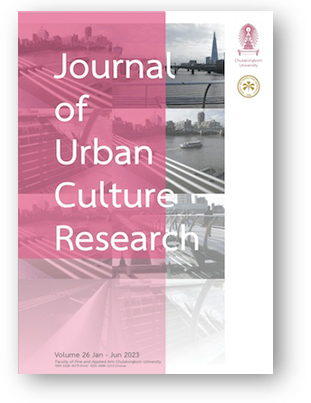Don Mula (Original Dance) and the “Sacred Sound”of Buddhism: Performing Collective Identity Among the Pwo Karen in Thung Yai, Thailand
DOI:
https://doi.org/10.14456/jucr.2023.4Keywords:
Don Mula Dance; Pwo Karen Identity; Cultural Transmission; Sacred Sound of Buddhism; Collective Consciousness; ThailandAbstract
The Don Mula (Original Dance) represents an important part of the collective consciousness and identity of the Pwo Karen people in the Laiwo sub-district, Thung Yai Naresuan Wildlife Sanctuary in Western Thailand. Due to modernization and changes that have occurred in Karen society at the turn of the millennium, many functions of the dance have been transformed. While the dance continues to be performed to pay respect to the Rice Goddess, it is employed to educate the younger generation about Buddhist knowledge and Karen beliefs as expressions of "Karen-ness." Through in-depth interviews and a study of the musical lyrics and dance, this article shows that the Karen identity in the Don Mula dance has shifted from the sacred texts and sound of Buddhism in the songs for the older generation to a performance and the dance movements for the younger generation.
Downloads
Published
How to Cite
Issue
Section
License

This work is licensed under a Creative Commons Attribution-NonCommercial-NoDerivatives 4.0 International License.
Authors authorize the JUCR to publish their materials both in print and online while retaining their full individual copyright. The copyright of JUCR volumes is retained by Chulalongkorn University.
The views and opinions expressed herein are those of the individual author(s) and do not necessarily reflect the policies or opinions of the Journal (JUCR), it editors and staff, Chulalongkorn University, or Osaka Metropolitan University.








